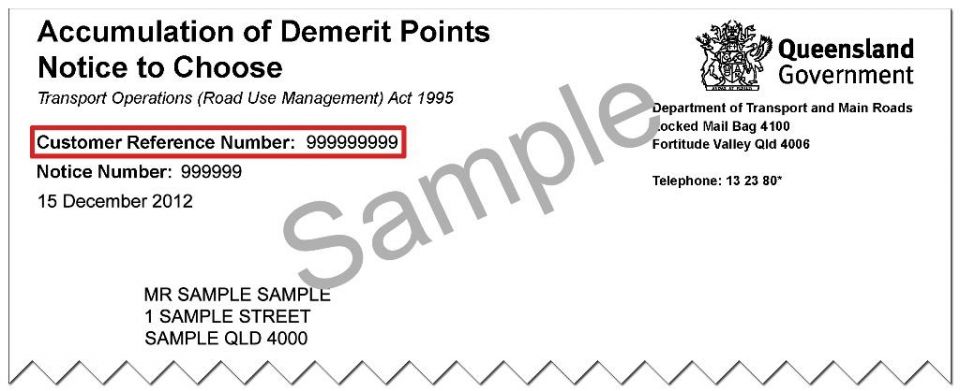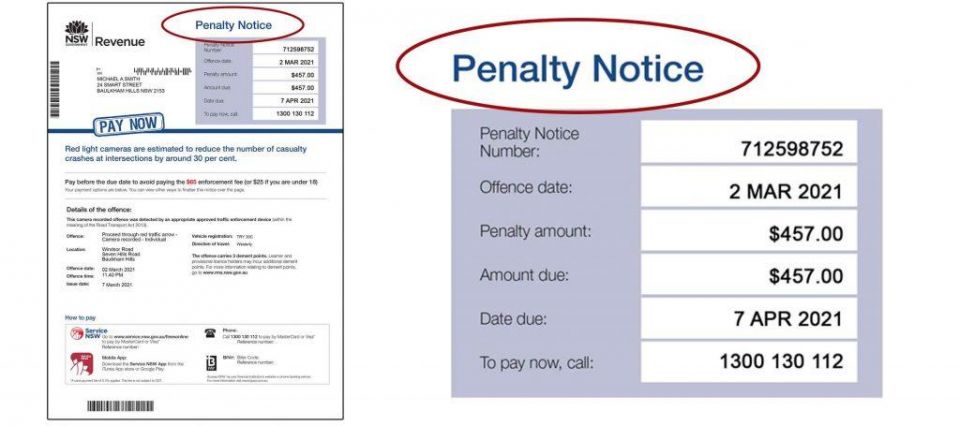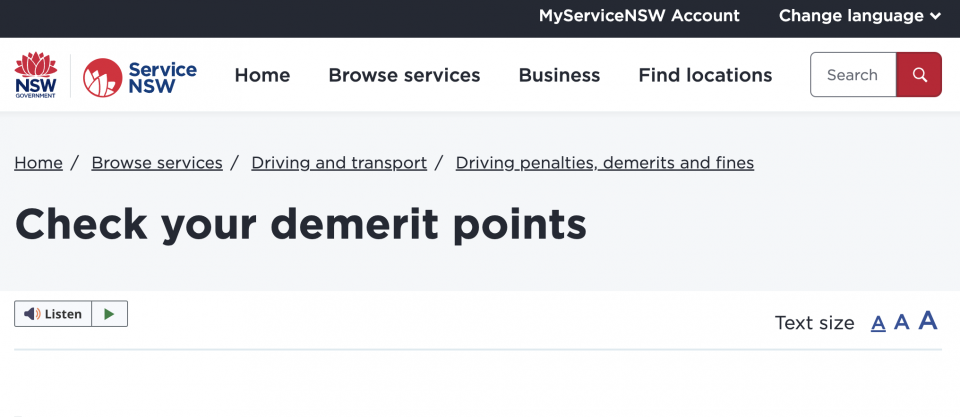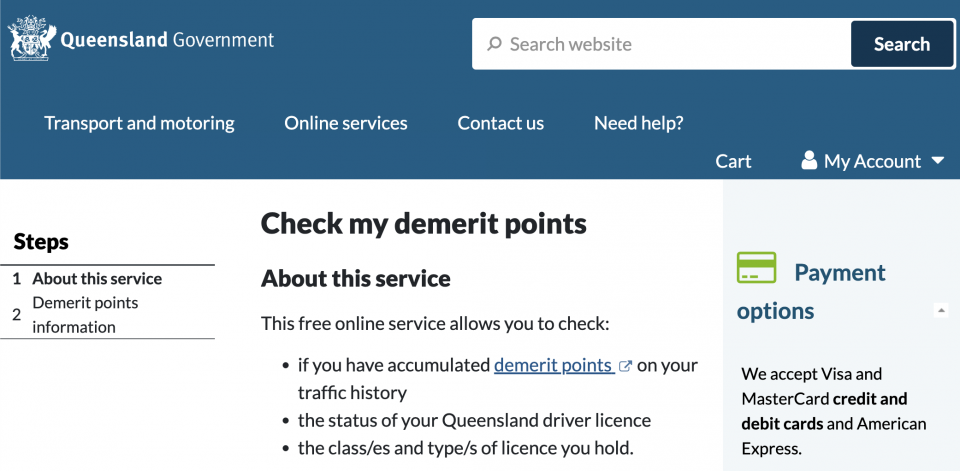

Andrew Maclean
4 Days Ago
How long do you have to wait to get the points back on your licence? Depends where you are and even what you have done to get the points.

Senior Contributor


Senior Contributor
Demerit points are designed to promote safer driving, with the idea being that if you lose all your points, you’re not allowed to drive for a period of time.
For instance, the New South Wales Government’s wording around demerit points is as follows:
“Demerit points are penalty points that you receive if you commit certain offences. All drivers and riders start with zero demerit points. If you drive safely and do not break any rules, you continue to have zero demerit points.”
And if you’re caught doing the wrong thing while riding or driving, you could have demerit points added to your driving record – and you will, in almost all cases, be hit with a financial penalty as well.

If you hit the demerit point limit, you might lose your licence.
If you reach your demerit “threshold”, you may be issued with a notice of licence suspension. If that happens, you may be eligible to request a “good behaviour period”, whereby you will still be be allowed to drive, but if you’re caught doing the wrong thing, you could lose your licence for twice as long as the original suspension would have been.
Don’t go thinking that you can speed as much as you like in Victoria just because you hold a Queensland licence – you can still accrue demerit points anywhere in Australia, and any offence you commit in another jurisdiction may still see those demerits applied to your licence.
There are also a number of other factors and considerations when it comes to the number of demerit points your licence can cop. Learner drivers or provisional (P1 and P2) drivers have different demerit point thresholds to fully licensed drivers, for instance. And in some areas, those classified as “professional drivers” – delivery drivers, taxi drivers, those who hold a truck licence – may be eligible for additional points. In NSW, a professional driver has 14 demerit points, where a standard licence holder has 13.

Check with your state or territory for the specifics on demerits, because it might seem weird that Victorians have a 12-demerit-point maximum and NSW drivers have 13 – however, different localities may have different penalties for driving offences, so a single point may not have the same, shall we say, value, in a different jurisdiction.
The point of this story, however, is to offer a lay of the land when it comes to how long driving demerit points last, because there are some asterisks and disclaimer text that you might want to know about before you think you’re ‘free to drive like you used to’!
Here’s a state-and-territory rundown of how many points can accrue, and how long they stay active on your driving licence:
13 demerit points for full licence holders: Demerit points in NSW stay “active on your licence for a three-year period, starting from the date of the offence”. Once that 36-month period has elapsed, those points will no longer be “active” and will not accumulate with any other offences. However, the NSW Transport department states that “old” demerits may be taken into consideration if you end up in court for other driving offences.

You also need to know that there’s a thing called ‘The 40-Month Rule’ in NSW: “Most offences and their demerit points are recorded within 4 months of the date of an offence. Occasionally, an offence and its demerit points may not be recorded within that period. This might be due to appeal proceedings or other delays. So that you are not unfairly impacted by an old offence, Transport will not count demerit points that are more than 40 months old (3 years and 4 months) towards a suspension.”
12 demerit points for full licence holders: Demerit points in Victoria “remain active for three years from the date that an offence occurred”, according to VicRoads.

“If demerit points are accrued across multiple offences/dates, the demerit points will expire according to each offence date”.
12 demerit points for full licence holders: “If you hold an open licence and you get 12 or more demerit point offences within any 3 year period, we will send you a licence sanction notice.” Further, it is stated on the QLD Government Transport site that “demerit points included on a sanction notice are considered ‘dealt with’ and are not counted again”.

If you receive a sanction notice, the state could suspend your licence, or “you may need to serve a good driving behaviour period”.
12 demerit points for full licence holders: “If you accrue 12 or more demerit points within a 3 year period you will be liable for disqualification, the SA Government’s site states. Note: the demerit points “apply from the date of the offence”, and are “recorded against a driver once the expiation has been paid, or finalised through a court process”. Beyond that, “demerit points expire three years after the date of the offence. For example, if an offence was committed on 18 May 2015 those points expire on 18 May 2018”.
12 demerit points for full licence holders: Don’t mind the vagaries of the wording on the Transport Tasmania site, “if you accumulate too many demerit points over a certain period of time, your licence will be suspended or you’ll be ineligible to obtain a new licence for a period of time”, because the state’s rules say that demerit points are active for three years from the offence date.
12 demerit points for full licence holders: “Demerit points expire three years from the date of the offence unless you accrue 12 or more points”, and the demerits are “recorded within 48 hours of the Infringement or a Final Demand for Payment being paid”. But you know that thing about not being able to get away with naughty driving in other states? WA’s rules are different: “Demerit points accrued in another Australian jurisdiction require you to pay the infringement, however the demerit points are not recorded against your Western Australian (WA) driver’s licence.”
12 demerit points for full licence holders: “Your licence will be suspended if you accumulate twelve or more demerit points within a three year period,” the ACT’s Access Canberra directory states. “The three year period is calculated from the date of the offence. If you accumulate more than your allowed demerit points for your licence class within a three-year period, your driver licence will be suspended. Some infringements do not attract demerit points.” Note that “suspended” is very different to what other jurisdictions suggest, as there is seemingly no “good driving behaviour” backup plan for ACT licence holders.
12 demerit points for full licence holders: The NT has a similar three-year period for demerit point duration, but the wording on the Driving Offences and Penalties page does leave the duration open to interpretation: “Demerit points apply from the date of the offence and remain active for up to 3 years.” It is good of the NT to clarify, however, that: “If you get them across many offences and dates, the demerit points will expire based on each offence date”, meaning it won’t accrue from the last offence.
If you are curious about your demerit points status, some jurisdictions offer the ability to see “at a glance” how many demerits you have on your licence. However, if you want to see how long you have until those demerits expire, you will need to pay for a report from the relevant authority.
For instance, in NSW, the Service NSW app has an at-a-glance feature if you have your licence attached to the app. But it doesn’t offer a date that the demerits end – to glean that info, you will need to buy an Online Driving Record, also known as an Uncertified report ($23) which is basically just a download of the status of your driving record. Or you can purchase a Certified Record, which is $33 and includes a hard copy mailed to your address or a document download, and it can be used in a court of law if needed.
Not intended as legal advice. Check with the relevant roads authority in your state or territory.
Matt has more than a decade of experience in automotive journalism, and loves exploring the pros and cons of new cars, delving into deep-dive industry stories, and going for a drive just for the fun of it.


Andrew Maclean
4 Days Ago


Max Davies
4 Days Ago


Matt Campbell
3 Days Ago


Max Davies
2 Days Ago


Josh Nevett
20 Hours Ago


William Stopford
14 Hours Ago